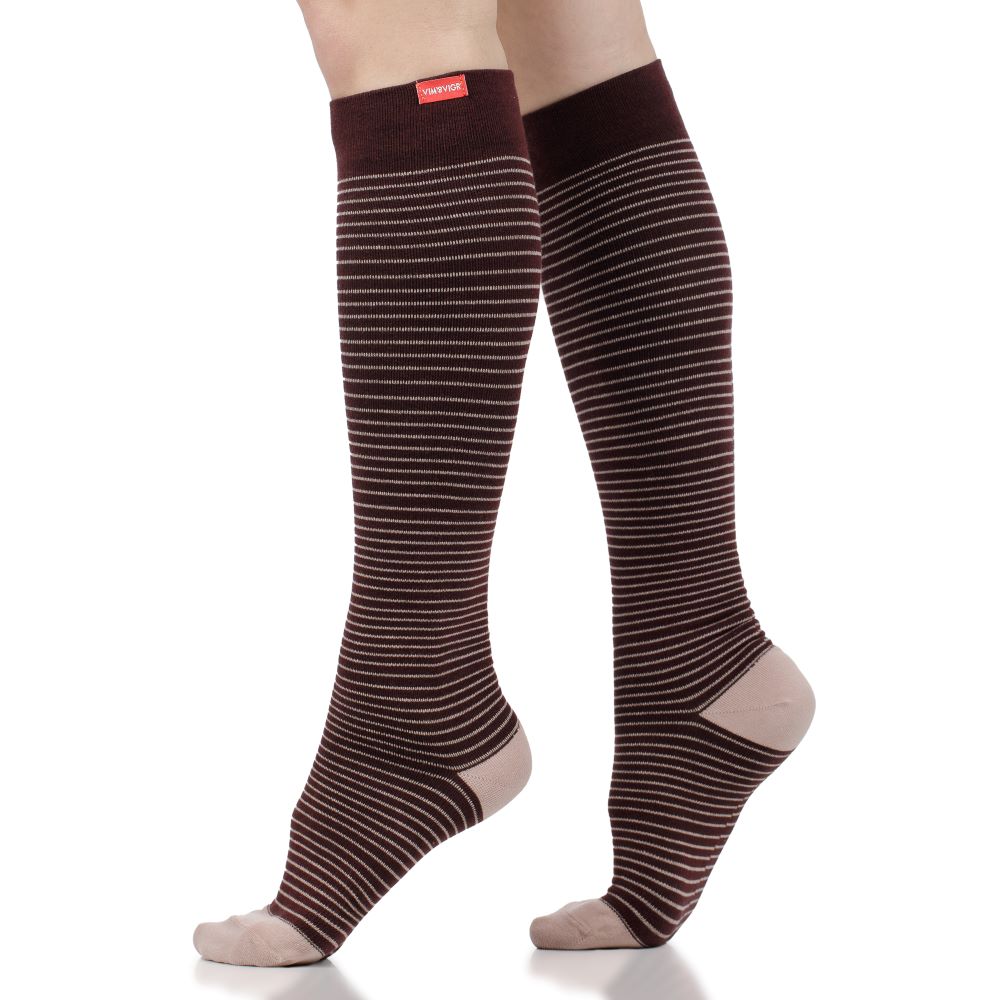How to Measure for Compression Socks & Knee-High Stockings
Compression garments, like compression socks and stockings, can deliver incredible benefits for recovery, increased exercise performance, and boosts in blood flow and vein health. Yet, sometimes patients and athletes sometimes don’t experience the full benefits of compression socks, but why? The answer is that the compression garments are not fitted right. Compression socks need to be tight enough to apply therapeutic pressure to the lower extremities, but also maintain comfort and flexibility for the wearer.
So, how can you ensure you have your compression socks fitted just right to get a circulation boost and other benefits whenever you wear them? The secret is to correctly measure your legs to find the ideal size for you. In this article, we tell you exactly how to measure your sizing for compression socks so you can get all of the health benefits while staying comfortable.
Measuring for Compression Socks and Knee-High Stockings Step-By-Step
Understanding the size of compression socks you need starts with measuring. Here are the steps for measuring for your next pair.
Step 1: Gather the Necessary Tools
You will need a measuring tape to gauge the dimensions around your ankles and calf muscles and down the length of your shins. You should also remove shoes and socks first, of course.
Step 2: Measure the Ankle
The tightest part of graduated compression socks is around the ankle, so it is really important to get the measurement of your ankle circumference (the measurement around the whole ankle) when looking for your size. Our Vim & Vigr size guide relies on your shoe size and calf circumference, but you may need your ankle circumference if your doctor wants to check on prescription socks’ exact sizing for any reason.
Step 3: Measure the Calf
Regardless of how much pressure you need your socks to apply to your lower legs, knowing your calf circumference is key to getting the correct fit. Use your measuring tape to get the circumference of your calf at the widest point. Write this down as you’ll need it for the size guide shortly.
Step 4: Measuring the Length
Some brands require buyers to also select a specific length for their compression socks. This is usually taken from the floor near your heel to the start of the knee. Vim & Vigr socks are not, however, separated by length.
Step 5: Using the Size Chart to Find Your Size
We have a Vim & Vigr size chart that maps your calf circumference against standard shoe size so you can find the best fit for you. Simply find your combination and order your pair of socks.
Find your next pair of compression socks.

How to Measure for Compression Socks Correctly
Have any more questions about measuring for compression socks? Here are some of the most frequent errors we’ve seen people make when taking their measurements.
Measure at the Right Time of Day
One thing you may not immediately think about is that you should always measure your calf circumference in the morning. Your legs and feet swell during the day, even when you have no circulation problems. This happens because of heat, moving around, spending time on your feet, or spending time sitting all day. Your calves and ankles may therefore measure wider in the evening.
Soothe aching limbs in relaxing compression socks.

Ensure That the Tape is Level and Snug
It’s easy to overestimate your measurements with a loose measuring tape. Keep it level against the skin, ensuring that it doesn’t fold or bunch. If the tape is snug and tight, you’ll get the most accurate measurement for boosting blood flow with compression socks.
Measure Both Legs for Accuracy
Just in case you make any errors once, it’s a good idea to measure both legs and confirm your numbers that way.
What If You’re in Between Sizes?
If your measurements suggest you would be in between our Vim & Vigr standard sizes, consider what your body type is and what you may be most comfortable in. You can consider if you often size up or down in other garments and make a judgement based on that (e.g., if you often size up in pants, you can expect to size up in compression socks). Remember, though: compression socks are meant to be tight to work their magic on your circulatory system, so don’t be tempted to buy them too loose.
Check out this video where we show different body types and sizes to make things a little clearer. And don’t forget that we do offer postage-paid free returns and exchanges to help you find that perfect fit for you. Don’t be afraid to try two different sizes and return the one that’s not just right.
Why Do You Have “Wide Calf” Sizes and How Do I Know If I Need Them?
For calf circumferences of 17-21” we have a range of “wide calf” compression socks. This helps you match against smaller shoe sizes, without sacrificing pressure levels.
All in all, compression socks can be difficult to measure for, as many people seek more comfortable, looser fits, when in fact they need to ensure the socks apply enough therapeutic pressure to make a difference when they’re being worn. With our size guide and these tips, you’ll be able to find a pair that actually works, but that you can also find comfortable when wearing for several hours at a time.
References
Charles, T., Mackintosh, D., Healy, B., Perrin, K., Weatherall, M., & Beasley, R. (2011). Merino wool graduated compression stocking increases lower limb venous blood flow: a randomized controlled trial. Advances in therapy, 28(3), 227–237. Read it here.
Brophy-Williams, N., Driller, M. W., Kitic, C. M., Fell, J. W., & Halson, S. L. (2019). Wearing compression socks during exercise aids subsequent performance. Journal of science and medicine in sport, 22(1), 123–127. Read it here.


















Leave a comment